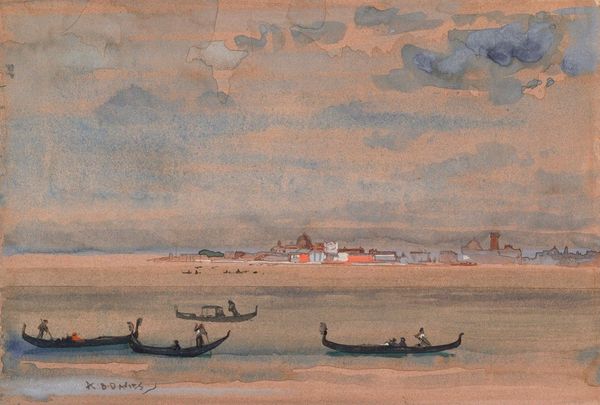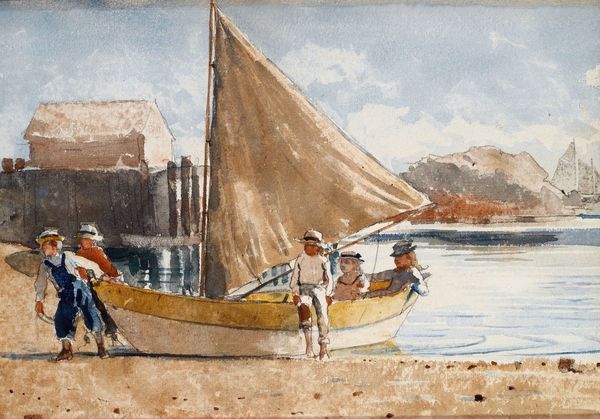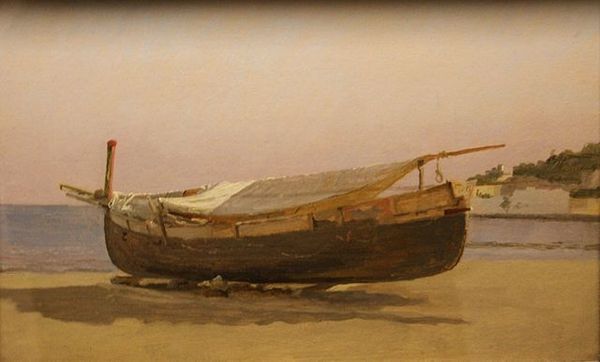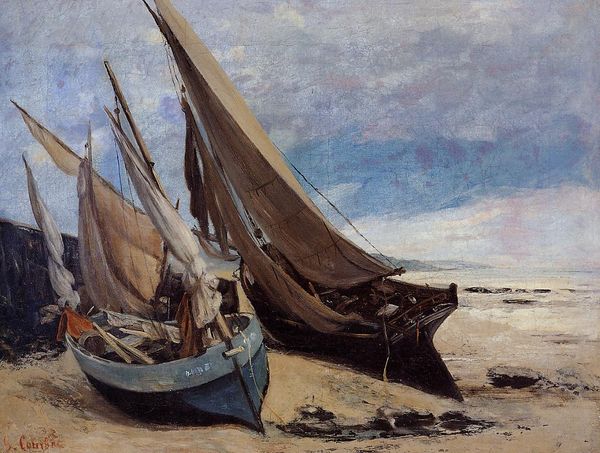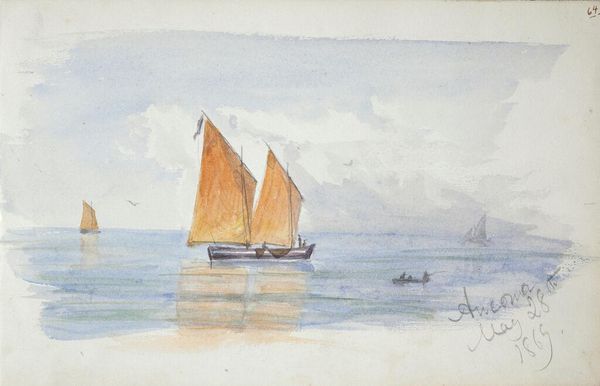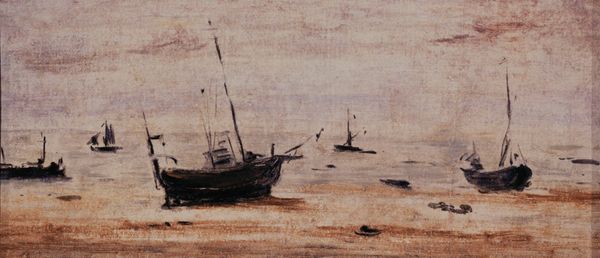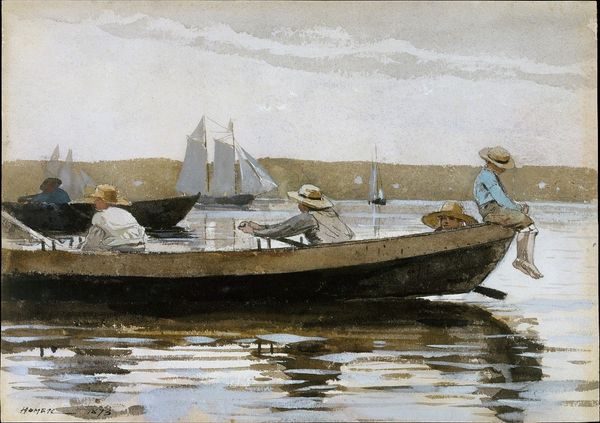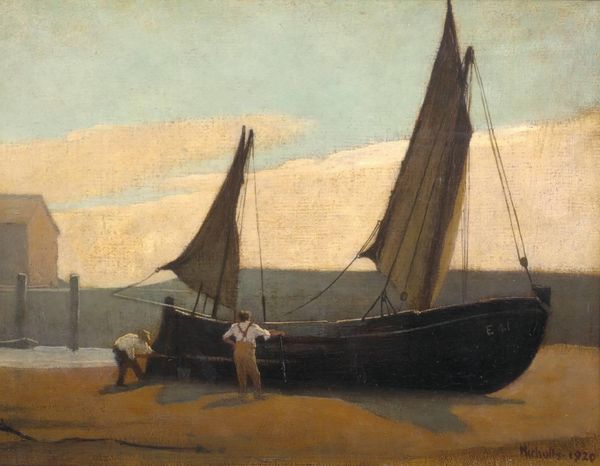
Copyright: Public domain
Thomas Pollock Anshutz created this watercolor painting, likely in the late 19th century, possibly depicting a scene on the eastern coast of the United States. Anshutz was associated with a progressive art education movement in the United States, who favored naturalism. At first glance, this is simply a seascape, but consider that genre painting and images of everyday life became more common as the 19th century developed. They reflect a growing interest in the lives of ordinary people. The late 19th century was also a period of expanding leisure time for some members of the working and middle classes, who had the time and resources to engage in recreational activities like boating. How does Anshutz depict the figures on the boat? Are they members of the upper, middle, or working class? If we consider that the artist was associated with a progressive art education movement that favored naturalism, what can that tell us about his politics and social views? Understanding the social and institutional context of an artwork requires in-depth research into the artist, the art market, and the cultural context in which they were working.
Comments
No comments
Be the first to comment and join the conversation on the ultimate creative platform.
